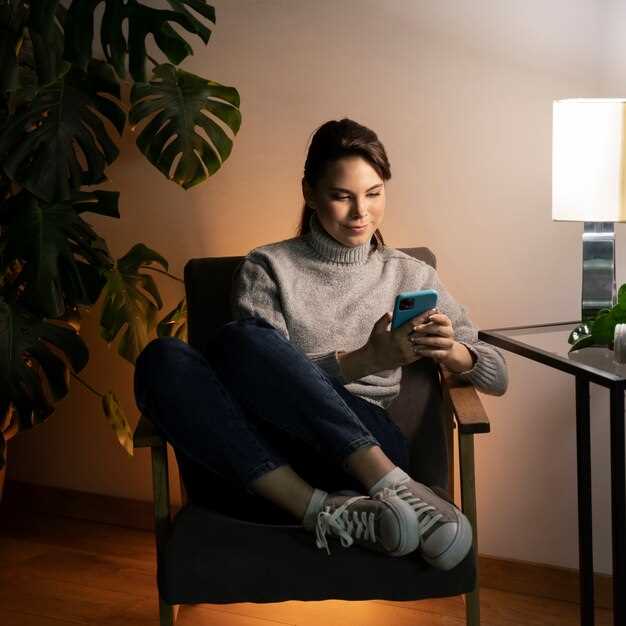
In the pursuit of creating a warm and inviting home, ambient lighting plays a crucial role. This type of lighting, often referred to as general lighting, provides a soft illumination that fills the room evenly, setting a tranquil atmosphere. The right ambient lighting transforms a space, enhancing its overall mood and aesthetic appeal.
When selecting lighting options for your interior, consider how different sources can contribute to the desired ambiance. From table lamps and floor lamps to wall sconces and dimmable ceiling fixtures, the possibilities are endless. By strategically placing these elements, you can achieve a cozy environment perfect for relaxation or entertaining guests.
In addition to practicality, the choice of light bulbs can dramatically influence the atmosphere of your space. Warmer tones evoke a sense of comfort, while cooler colors can create a more focused environment. Understanding how to utilize various lighting techniques will allow you to maximize the comfort and functionality of your living areas.
Choosing the Right Type of Ambient Lighting Fixtures

When designing an inviting interior space, selecting the appropriate ambient lighting fixtures is crucial for creating a cozy atmosphere. Ambient lighting serves as the foundational light source in a room, providing overall illumination and setting the tone for the entire area.
One popular option for ambient lighting is ceiling-mounted fixtures, such as chandeliers or flush-mount lights. These fixtures can distribute light evenly across the space, enhancing the overall feel of the interior. Chandeliers, with their decorative elements, can also serve as a focal point in a room while providing ample light.
Floor lamps offer another versatile solution for ambient lighting. They can be easily moved and adjusted to fit different spaces, making them ideal for creating cozy nooks. Look for lamps with a warm light bulb to enhance the inviting atmosphere.
Wall sconces can also contribute to ambient lighting, especially in hallways or as accent pieces in living areas. They can provide subtle illumination that complements other fixtures while adding a decorative touch to the walls.
Incorporating table lamps on side tables or desks not only enhances functionality but also contributes to an inviting environment. Choosing lamps with dimmable features allows for flexibility in adjusting the light levels to suit various moods and activities.
Lastly, consider using recessed lighting for a more modern approach. This type of fixture is installed directly into the ceiling, creating a clean look while providing effective ambient light. Dimmable recessed lights can be adjusted to achieve the perfect ambiance.
Ultimately, the right choice of ambient lighting fixtures depends on the specific needs of your interior space, taking into account factors such as style, functionality, and warmth. Thoughtful selection will foster a cozy, welcoming environment.
Strategically Placing Lights for Maximum Comfort
Proper lighting is essential in creating a warm and inviting interior space. The arrangement of lights can dramatically influence the mood and functionality of a room. To achieve maximum comfort, it is crucial to understand the various types of lighting and how to place them effectively.
Start by identifying key areas within the room that require illumination. Task lighting, such as table lamps or reading lights, should be placed where activities occur, like near seating or workspaces. This ensures that the light’s intensity complements the tasks without overwhelming the space.
Next, consider ambient lighting, which provides overall illumination. Ceiling-mounted fixtures, such as chandeliers or flush mounts, can serve as the primary light source. However, to enhance comfort, these should be supplemented with wall sconces or indirect lighting. Placing lights on walls or behind furniture creates a gentle glow that softens shadows and reduces glare.
Another effective technique is layering different lighting sources. Combining ambient, task, and accent lighting allows for flexibility in adjusting brightness levels based on the time of day or specific activities. Dimmers can be installed to modify the intensity, further enhancing the cozy atmosphere of the interior.
Lastly, pay attention to the color temperature of the lights. Warm white bulbs (around 2700K to 3000K) evoke a sense of coziness, while cooler temperatures can create a more energetic feel. Selecting the right color for the lighting is vital in tailoring the ambiance to suit personal preferences.
By strategically placing lights throughout the space and considering their types and color temperatures, it is possible to craft an interior that is both stylish and comfortable, conducive to relaxation and social interaction.
Layering Ambient Lighting with Other Light Sources

Layering ambient lighting with other light sources is essential for creating a balanced and inviting interior space. Ambient lighting serves as the foundational layer, providing overall illumination and establishing the mood of the room. To enhance this effect, it is vital to incorporate task and accent lighting, which can bring depth and functionality to the environment.
Task lighting focuses on specific areas where activities such as reading, cooking, or working occur. This type of lighting helps to eliminate shadows and provides adequate brightness for practical tasks. By strategically positioning task lights, such as desk lamps or under-cabinet lighting, you can complement the soft glow of ambient lighting, ensuring that areas requiring more focus are well-lit.
Accent lighting, on the other hand, adds visual interest and showcases specific features within the space, such as artwork, architectural details, or plants. Using spotlights, wall sconces, or decorative pendant lights can draw attention to these elements while also enhancing the overall atmosphere. When combined with ambient lighting, accent lights can create a dynamic interplay of shadows and highlights, enriching the room’s aesthetic.
To achieve a harmonious layering effect, consider using dimmers for ambient lighting, allowing you to adjust the brightness according to the time of day or occasion. This flexibility enables an effortless transition between different lighting layers, providing a cozy and adaptable environment. With careful planning and the right combination of light sources, layering can transform a simple space into a warm and inviting haven.



